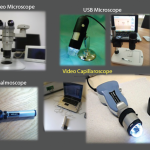Raynaud’s phenomenon in scleroderma or systemic sclerosis (SSc) is associated with significant discomfort and functional disability, especially in the presence of digital ulcers.1 Having lived with diffuse systemic sclerosis (dSSc) for nearly a decade, I can attest to this.
It has been my experience that the hand pain and dysfunction in dSSc stems from Raynaud’s episodes, acro-osteolysis, digital ulcers, and the general discomfort and swelling that comes with the disease (see Table 1), all of which have been associated with vasculopathy and impaired circulation to the digits.2-6
Interestingly, all four types of pain are decreased or completely relieved while I wear battery-operated heated gloves (see Table 1), even without pain medication. In addition, wearing the gloves decreased the swelling in my fingers to the point that I can now make a fist, which was impossible prior to continuous (more than six hours per day) heated glove use (see Figure 1). Pain medications often mask the symptoms, but they don’t address the source, and one can take only so much aspirin and amlodipine or other vasodilator before the side effects outweigh the benefits.
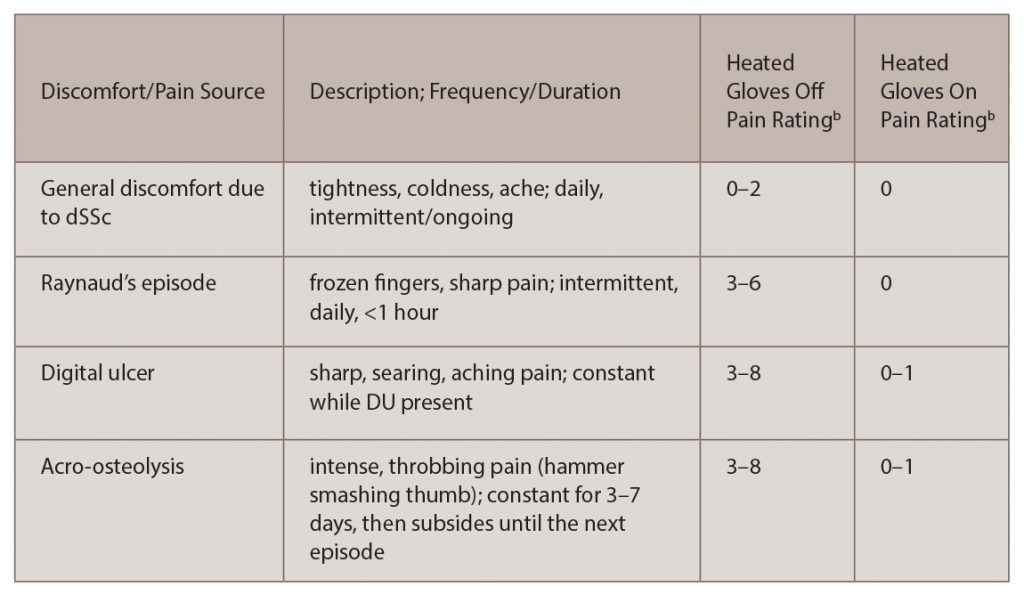
(click for larger image) Table 1: Digital Rest Paina with dSSc & Pain Rating with & without Heated Gloves
a. Pain rating is higher for each category when using hands/fingers for tasks.
b. Ratings are based on authors 2012-17 experience.
Numerical Pain Rating Scale: 0=no pain; 10=worst pain imaginable
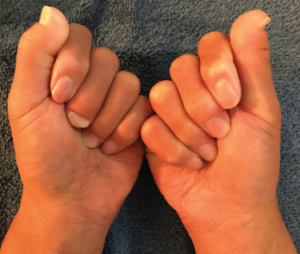
Figure 1: The first and second digits still lack full flexion range of motion. However, the remaining digits can flex into the palm to make a fist, which was not possible prior to continuous heated glove use.
Heated gloves, therefore, may be a beneficial nonpharmaceutical adjunct in the management of hand pain and dysfunction in patients with SSc.
In “Thumbs Up for Heated Gloves” (The Rheumatologist, October), the continuous use (8–16 hours/day) of battery-operated heated gloves during the winter months decreased four types of hand pain (see Table 1), increased range of motion, improved sensation and increased hand and overall function in a patient eight years post-dSSc diagnosis. In addition, the patient did not develop an ulcer on the finger that had had a recurring ischemic ulcer the previous four winters. This ulcer-prevention potential of heated glove use warrants further investigation.
In the meantime, however, can continuous use of heated gloves decrease pain and improve function in your patients? Because a key tenet of Raynaud’s and scleroderma management is “cold avoidance,” I believe other patients with dSSc could benefit. However, there are several considerations.3
The safety and effectiveness of continuous heated glove use depend on certain patient characteristics, digital skin integrity and glove choice. First and foremost, the patient should be cognitively intact and be able to detect superficial heat changes in the hands and digits. Also, she should be physically capable of turning the gloves on and off and adjusting the temperature settings to prevent overheating. If a digital ulcer is present, its origin and status should be determined and appropriate wound care and treatment prescribed for the type of lesion.5
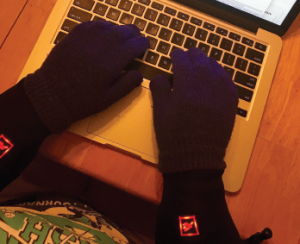
Figure 2: Heated gloves on a “cool” (71ºF) summer morning halt Raynaud’s episodes and enable more comfortable typing.
My ischemic ulcer responded well to heated glove use, and topical medications were not needed. However, the effect of continuous local heat on other types of digital lesions (e.g., erupted subcutaneous calcinosis, traumatic ulcers, gangrene) and topical medications has not been studied; thus, clinical judgment and close monitoring are needed to determine appropriateness of this intervention.
Along with patient characteristics and digital skin status, glove choice is important. Most heated gloves, including the battery-operated heated gloves mentioned in this article and the October article, are not regulated medical devices. Patient variability, stage of scleroderma, nature of digital ulcers and brand of glove may affect the results.
Heated gloves should (see Figures 2 and 3):
- Provide heat all the way to the fingertips;
- Have adjustable heat settings;
- Be lightweight, washable and durable to tolerate wear and tear of daily donning and doffing;
- Allow adequate fine motor function;
- Come with battery chargers and have wall/car adapters available to supplement batteries; and
- Come with good customer service support.
These are just a few observations, and the list is by no means all inclusive. The important point is that the gloves meet the needs, abilities and lifestyle of the individual.
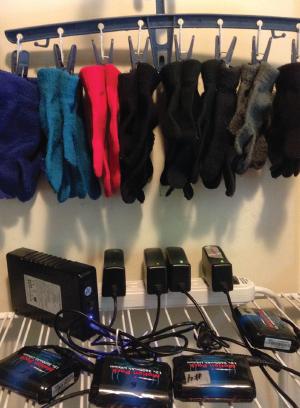
Figure 3: My battery-charging station and knit-glove collection. Knit gloves worn over the heated glove (liners) provide extra protection for the fingertips and keep the gloves clean.
If daily, continuous use of heated gloves can help a patient in the later stages of dSSc (as I am), could it decrease pain and delay sclerodactyly in the earlier stages of the disease? I think it’s worth investigating.
I met a 19-year-old young woman who was 18 months post-dSSc diagnosis and presented with microstomia, edematous fingers and healed ulcers, but had not yet developed disfiguring flexion contractures. Her mother had bought her heated gloves after seeing mine, and we three discussed the rationale and precautions for continuous glove use (see sidebar, right), as well as the social or cosmetic aspect. She said the heated gloves did make her hands feel and work better, but she wore them only when she needed them: when her hands were cold or the Raynaud’s pain was too much. I wonder what would happen if she dared to wear them continuously?
All 4 types of pain—stemming from Raynaud’s episodes, acro-osteolysis, digital ulcers & swelling—are decreased or completely relieved while I wear battery-operated heated gloves.
While researchers work to find a cure for SSc and more effective pharmaceutical agents for Raynaud’s, we patients can do our part: Avoid cold, and increase circulation to our fingers. Ultimately, it is up to the clinician and patient to decide what is the safest, most feasible method to alleviate pain and protect and preserve hand integrity and function in the individual.
Wearing heated gloves continuously takes planning, time, effort and dedication, and admittedly, it can be cosmetically awkward. However, given the alternative—Raynaud’s, severe pain and decreased hand function—I’d give heated gloves two thumbs up!
Rosemarie Curley, MPT, DPT, completed her transitional doctorate from Northeastern University College of Professional Studies in July and practices physical therapy in inpatient rehabilitation at Johnston-Willis Hospital in Richmond, Va. Personal experience with topical steroid withdrawal in children and diffuse systemic sclerosis fuels her desire to research and present the patient’s perspective in evidence-based practice.
Disclosure: The author has no potential conflicts of interest to disclose. The information presented is based on personal experience, which the author hopes will encourage further dialogue and research on the use of continuous local heat in the management of hand pain and dysfunction in scleroderma.
Tipsa for Continuous Heated Gloveb Use
Wearing Time
- Daily, continuously (as desired) in the fall and winter to prevent Raynaud’s attacks.
- Remove for hygiene and when wearing gloves is not feasible.
- Remove before going to sleep.
- Wear to prevent Raynaud’s episodes, whenever fingers hurt or are cold, or when you want warmth and protection for fingers.
Use
- Typical day: Cover glovesb with knit gloves to keep them clean. Use vinyl gloves in place of knit gloves if getting hands wet. They can be worn under garden gloves, snow gloves, etc.
- Obtain two sets of batteries to alternate; use one set while the other set is charging. Use car and wall adapters when you will be sitting in one place for a while. This saves the portable batteries for when you are active.
These suggestions are for heated-glove use in the colder months. Glove use decreases in the warmer months, but on the days that you just want comfortable hands, heated gloves hit the spot.
Skin Care
- Heat can increase skin dryness. Moisturize hands more frequently, or try this technique occasionally: apply lotion or petroleum jelly, don vinyl gloves, then don heated gloves.
Safety
- Follow manufacturer’s instructions for use.
- Digital ulcers: Consult your physician for appropriate wound care. Practice good infection control measures, and keep inside of gloves clean.
- Do not fall asleep with gloves on.
- Shut off gloves and disconnect batteries when you take them off. This will prevent accidentally turning them on, causing overheating and glove damage.
- If pain and/or skin appearance are worse with gloves on, remove them and consult your physician.
a. Tips are based on personal experience and do not constitute medical advice. Heated glove use may not be appropriate for everyone. Consult your physician prior to implementing continuous heated glove use, especially in the presence of digital ulcers.
b. Motion Heat glove liners, Calgary, Canada.
References
- Merkel PA, Herlyn K, Martin RW, et al. Measuring disease activity and functional status in patients with scleroderma and Raynaud’s phenomenon. Arthritis Rheumatol. 2002;46(9):2410–2420.
- Matucci-Cerinic M KB, Wigley F. Evidence that systemic sclerosis is a vascular disease. Arthritis Rheumatol. 2013;65:1953–1962.
- Wigley FM, Flavahan N. Raynaud’s phenomenon. N Engl J Med. 2016;375(6):556–565.
- Park JK, Fava A, Carrino J, Del Grande F, Rosen A, Boin F. Association of acroosteolysis with enhanced osteoclastogenesis and higher blood levels of vascular endothelial growth factor in systemic sclerosis. Arthritis Rheumatol. 2016;68(1):201–209.
- Cappelli L, Wigley FM. Management of Raynaud phenomenon and digital ulcers in scleroderma. Rheum Dis Clin North Am. 2015;41(3):419–438.
- Amanzi L, Braschi F, Fiori G, et al. Digital ulcers in scleroderma: Staging, characteristics and sub-setting through observation of 1614 digital lesions. Rheumatol (Oxford). 2010;49(7):1374–1382.

